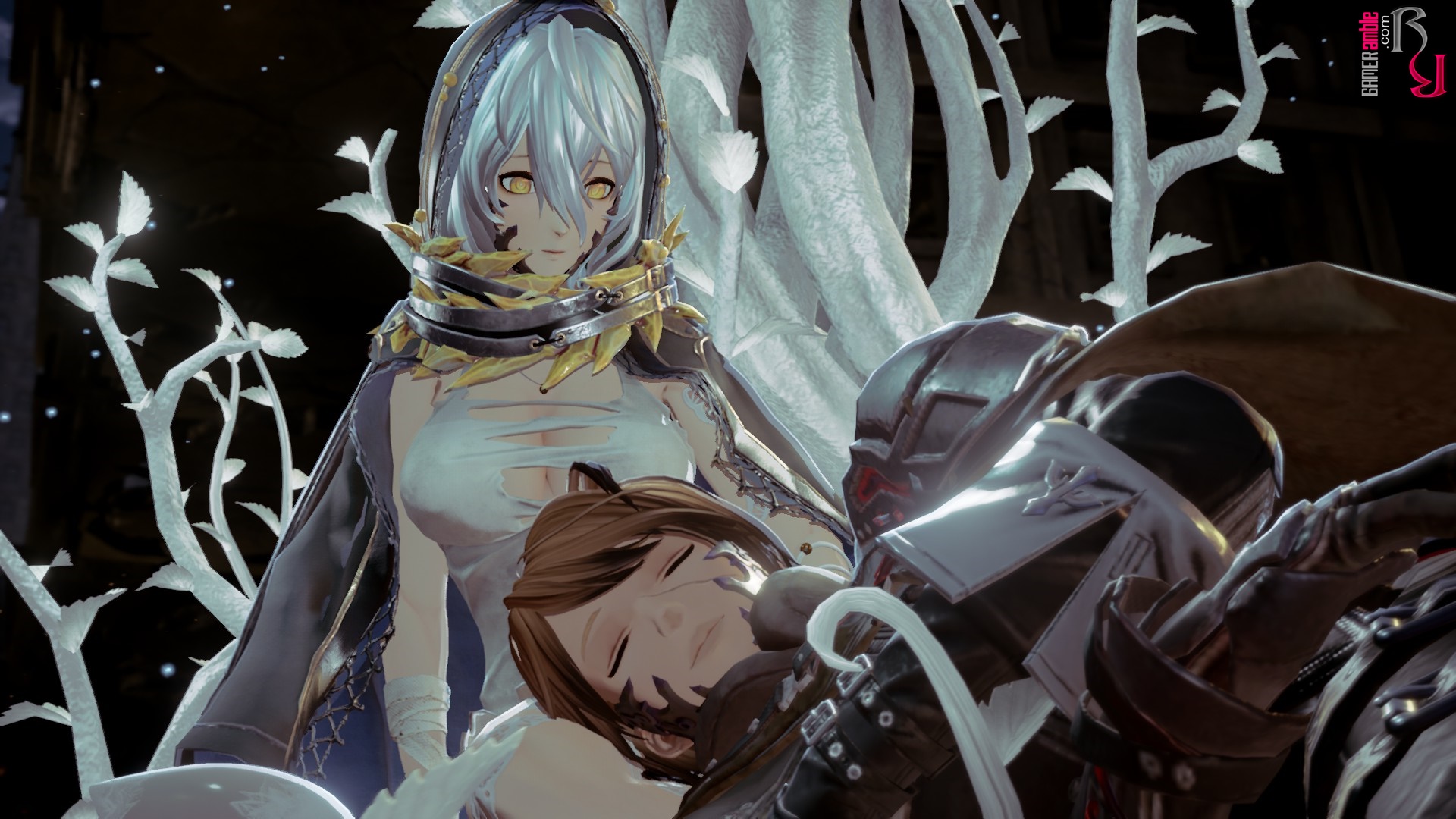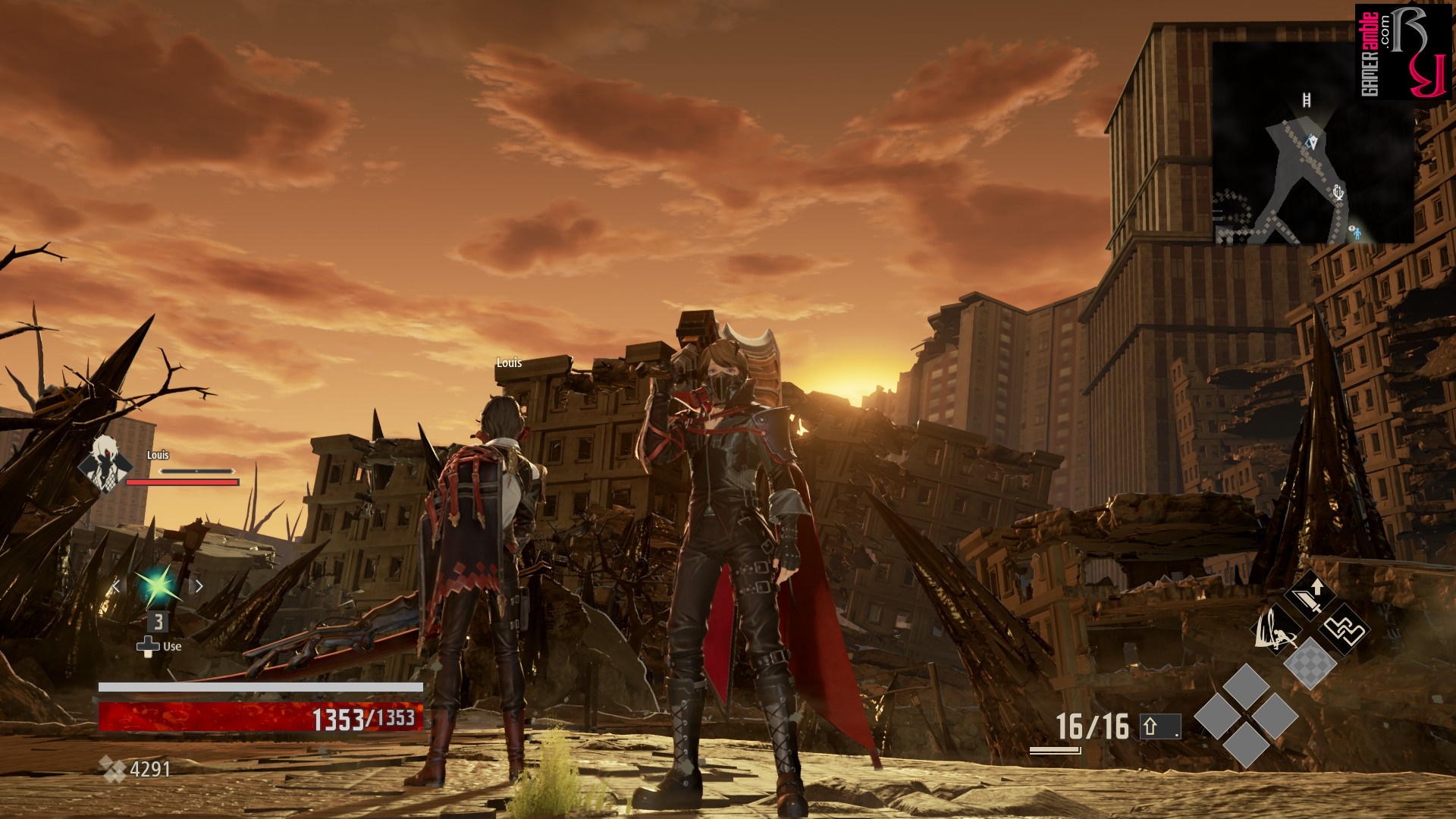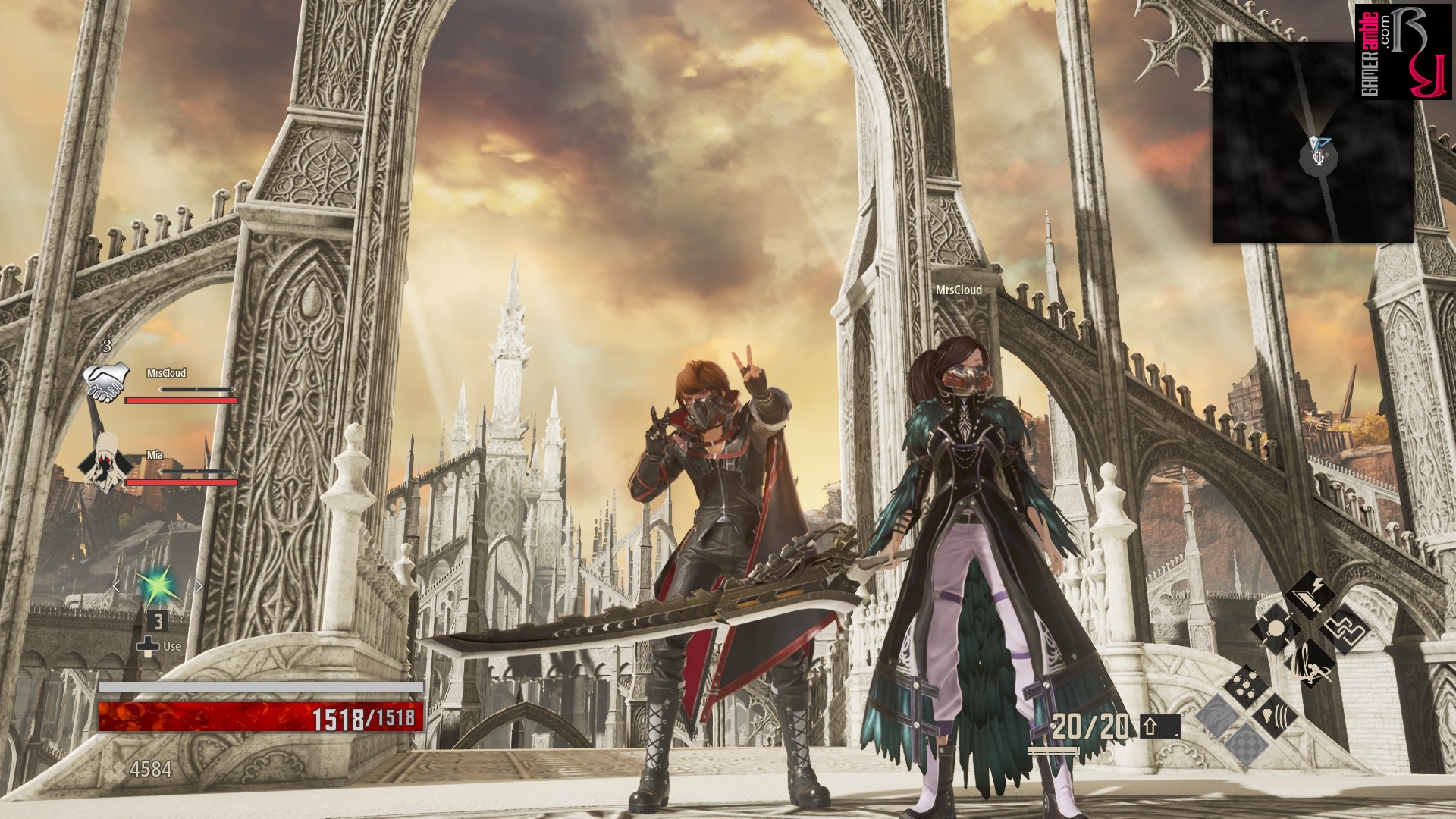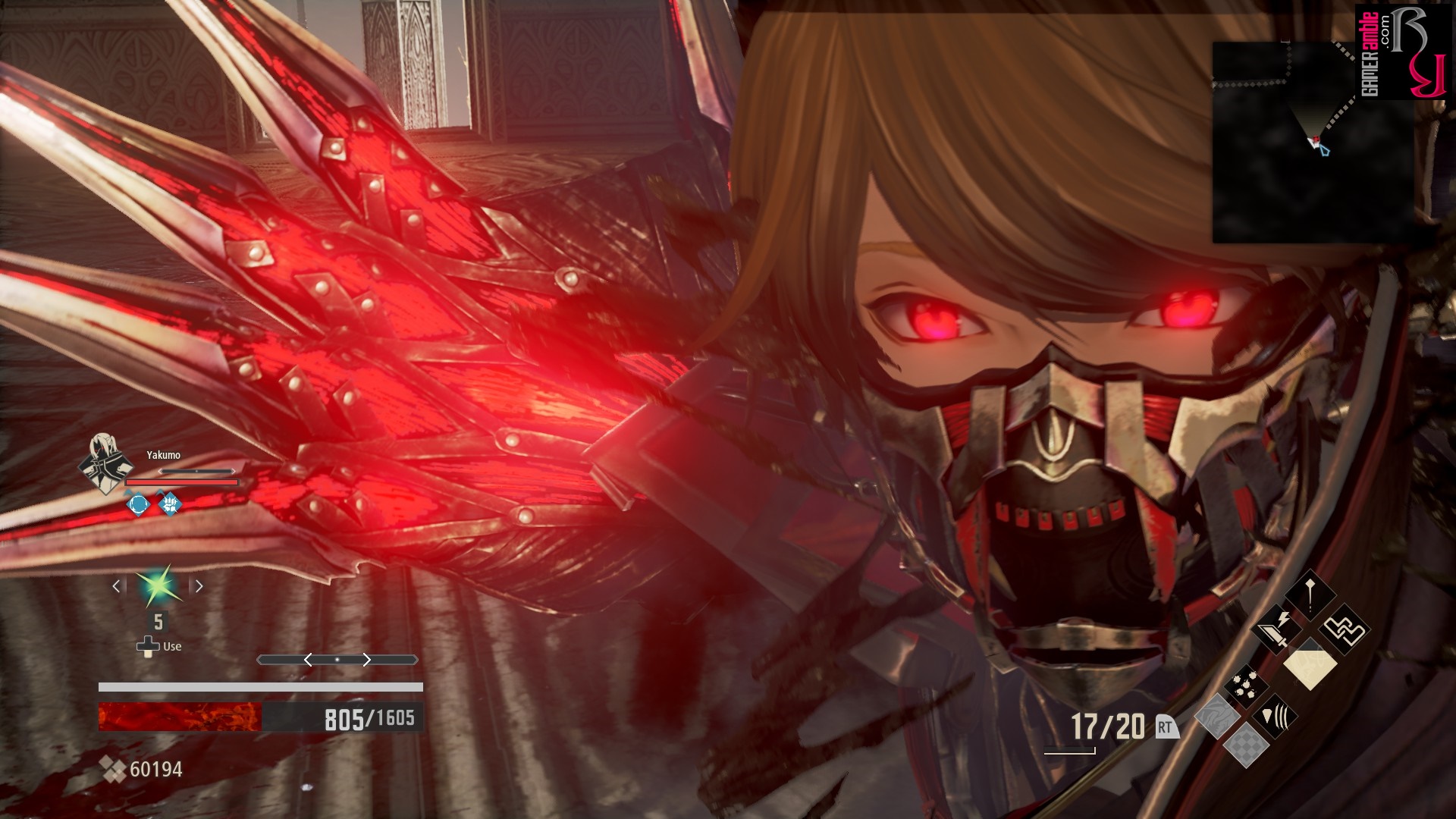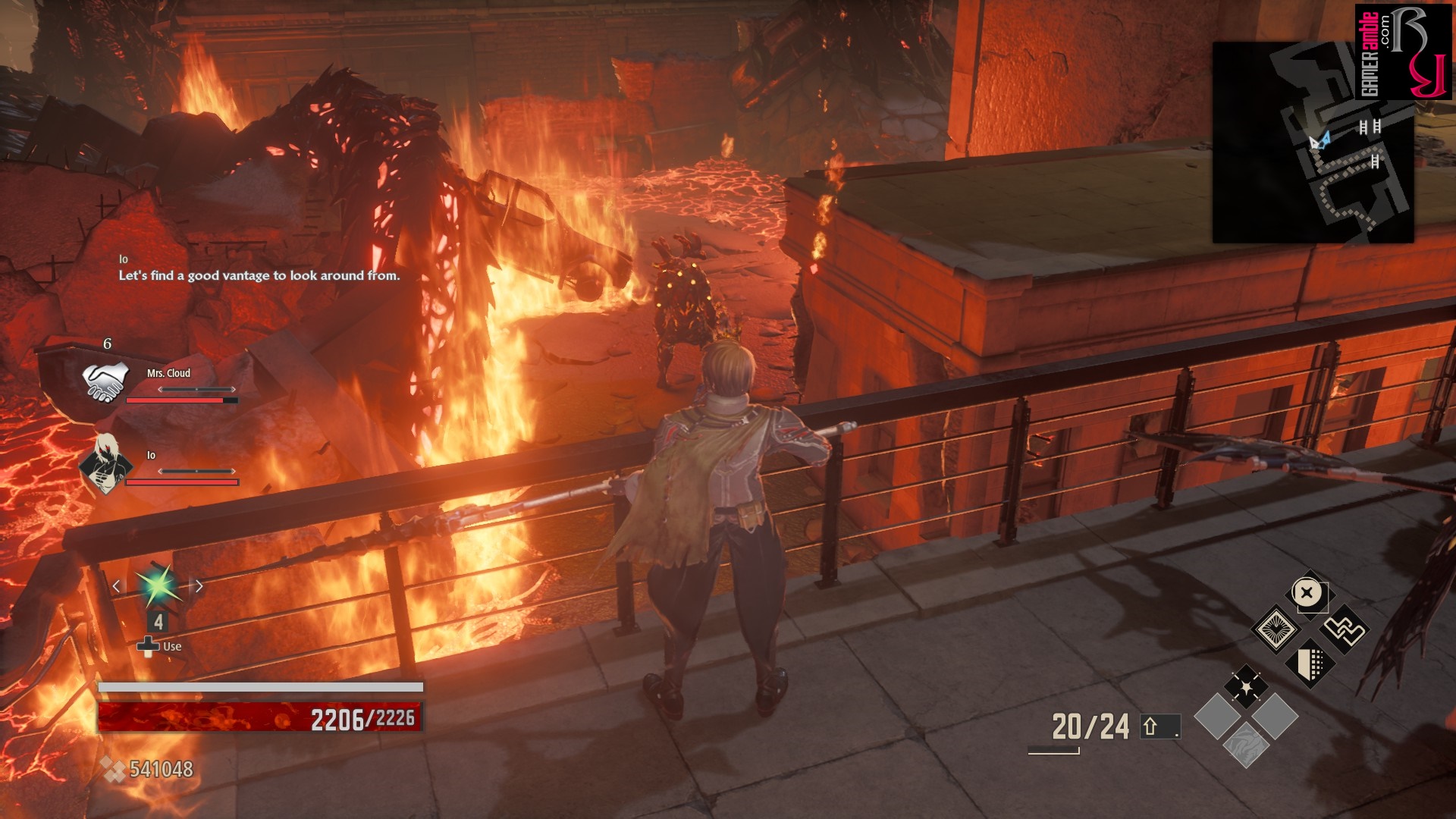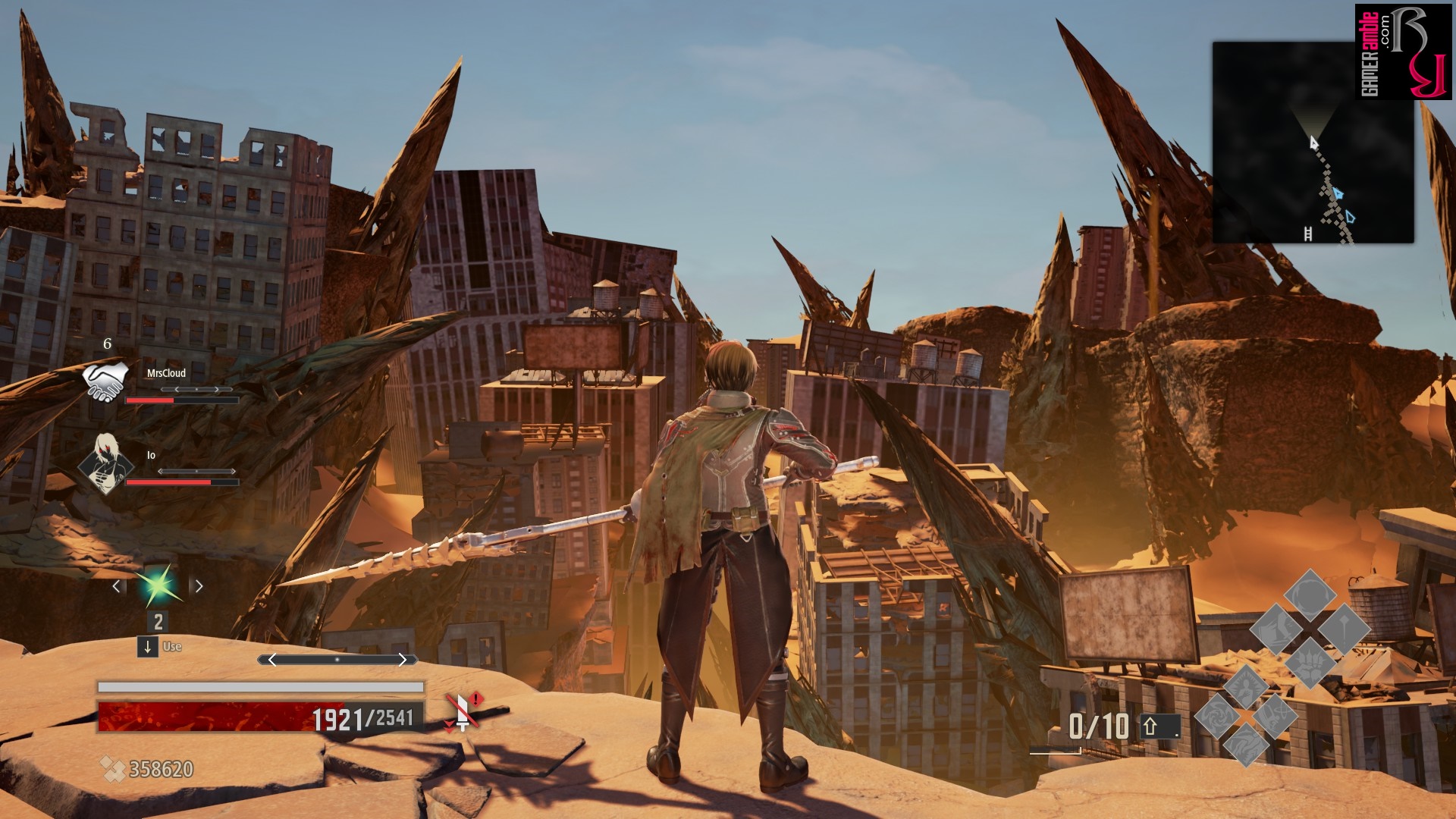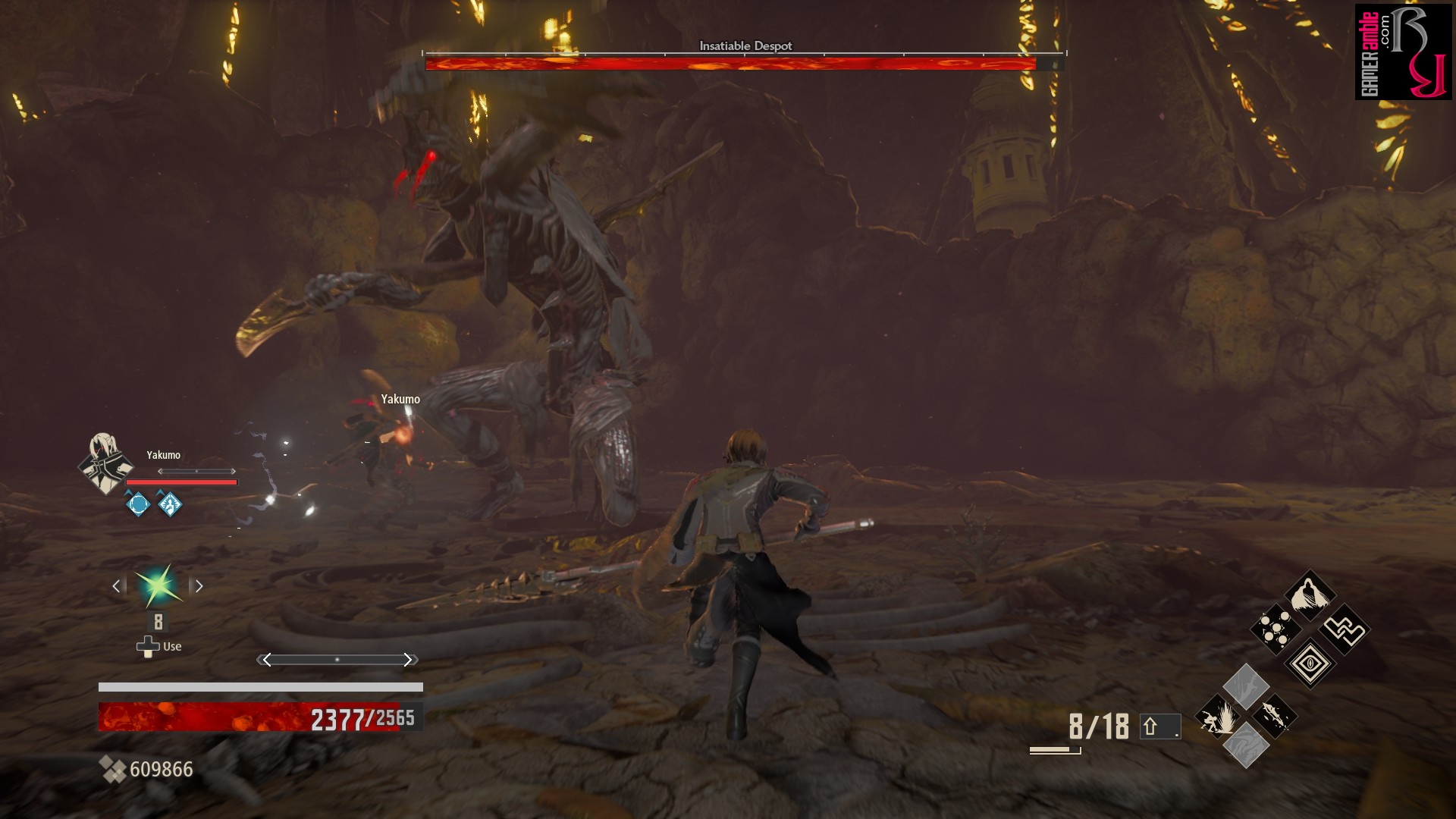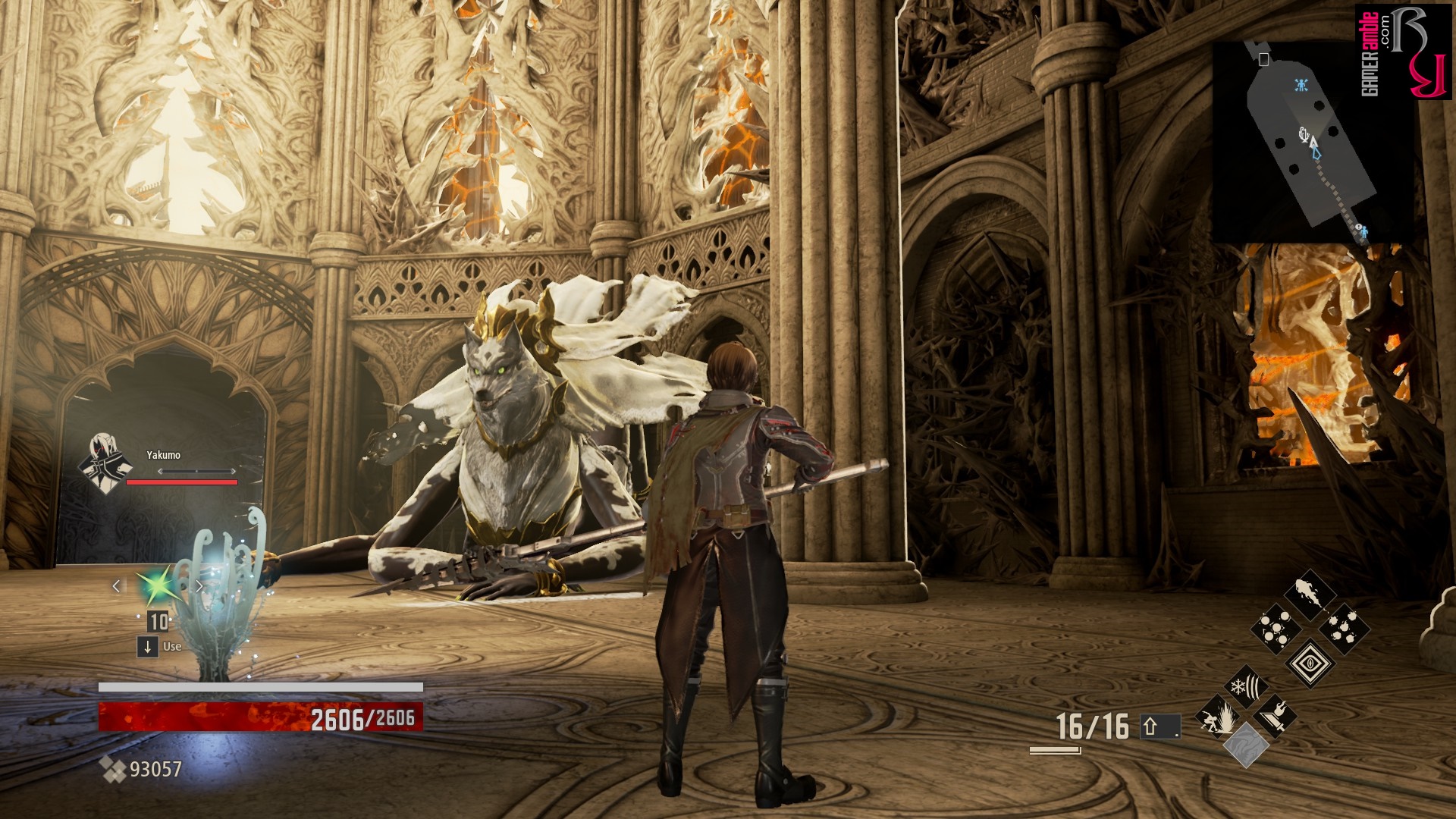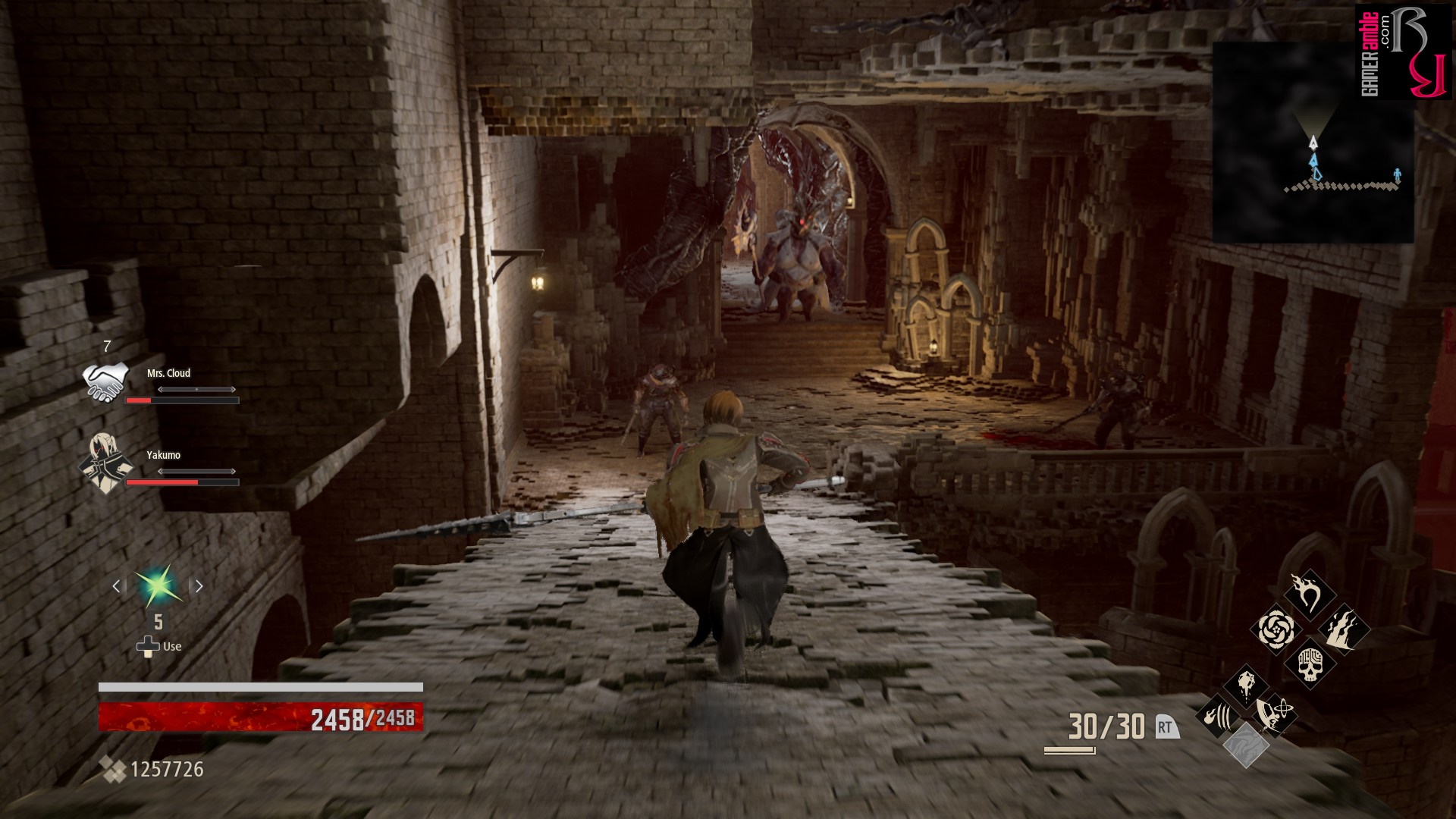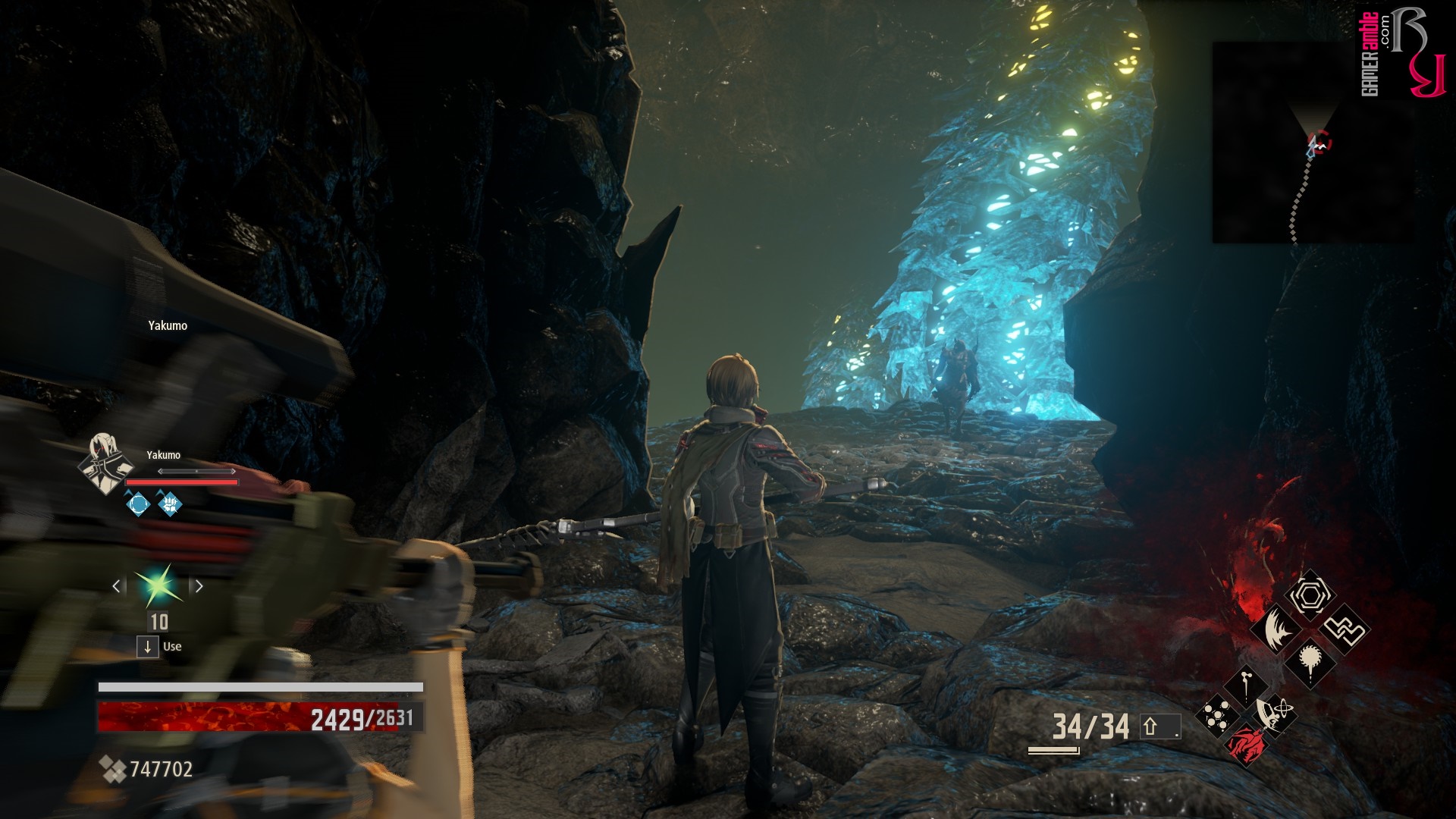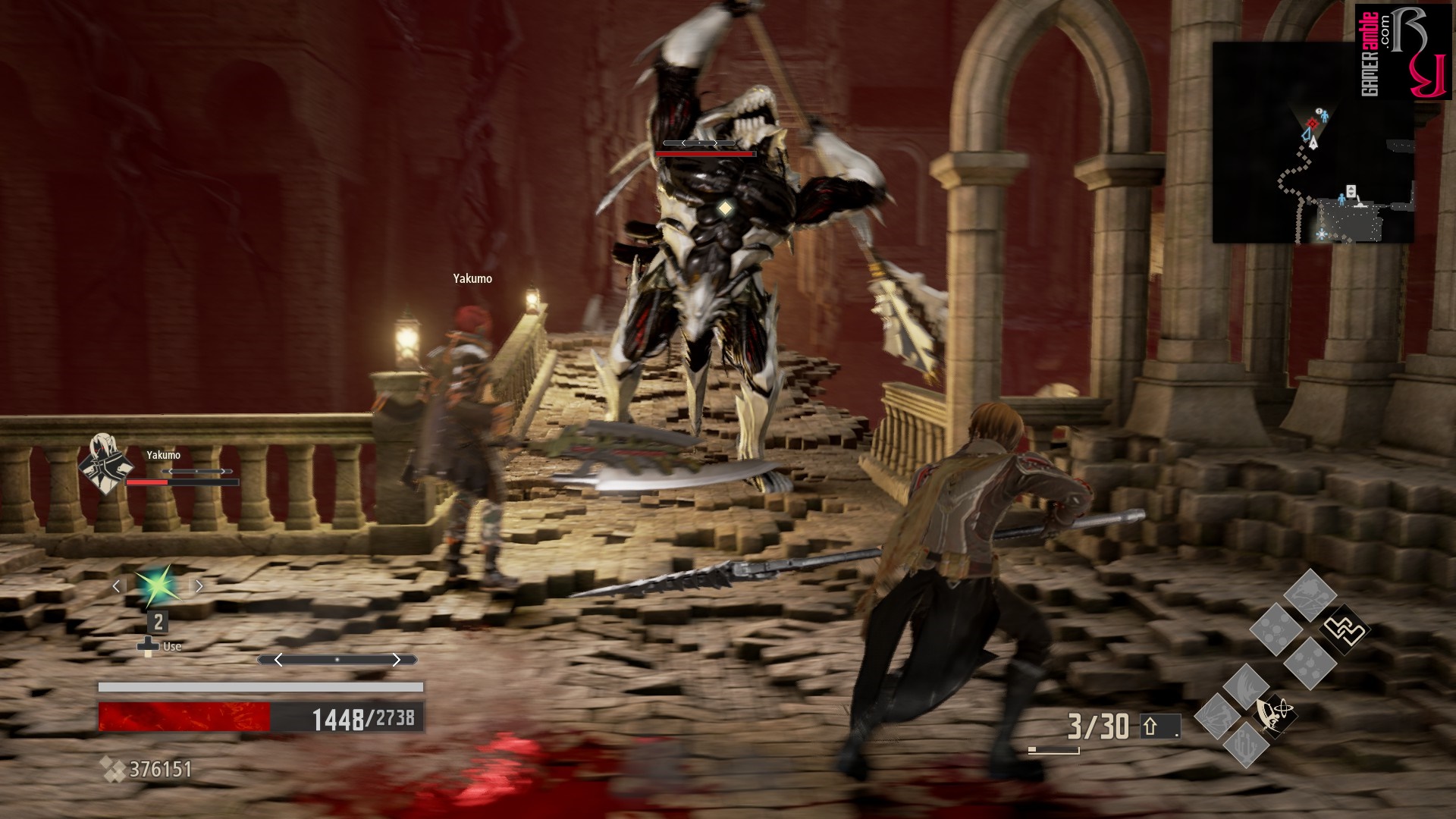CODE VEIN
Developer: Bandai Namco Studios | Publisher: Bandai Namco Entertainment | Release Date: 2019 | Genre: Action / RPG / Adventure | Website: Official Website | Purchase: Steam
The future is bleak in Code Vein, especially for the unfortunate humanoids known as Revenants. These undead humans are practically immortal thanks to Biological Organ Regenerative Parasites. Unfortunately, there are also severe drawbacks along with the vampire-like strength and abilities. Humans who are turned into Revenants not only lose their memories but are also dependent on blood to survive. Without blood, they will enter into a frenzy and eventually mutate into mindless cannibals known as the Lost.
After creating their character using a rather extensive character creator, players enter the world of Code Vein as a Revenant with no memories. Fortunately, another Revenant, Io, is on hand to provide guidance. Players soon learn that they are in the ruined city of Gaol of the Mists, where the situation is pretty dire for Revenants. Not only are they trapped in the area by a thick fog called the Miasma that causes Revenants to frenzy, but their only source of blood, a substitute called Blood Beads, is becoming scarcer. Of course, since your character is the main protagonist, they have a unique ability that sets them apart from all the other Revenants, making them invaluable for the world-saving quest that follows.
Code Vein has a very intriguing backstory, but from a gameplay perspective, most players will immediately describe it as an anime-themed Souls-like. It certainly wears its influences on its frilly sleeves, and the comparisons to Dark Souls are immediately apparent. The action is viewed from a third-person perspective as players traverse a hostile world where they must vanquish enemies and absorb their “haze.” Haze can be used as a currency to purchase new weapons and upgrades and to level up your character. However, if a player is defeated, they will lose all the haze they are currently carrying and must return to where they died to retrieve it. Actions such as resting to restore health and leveling up can only be done at special spots called “mistles,” which are also where players reform if they die. However, using a mistle results in all enemies in the area respawning. Lurking at the end of each map is a large boss that players must defeat to gain access to new places. All of this will sound very familiar to Dark Souls players, but Code Vein has a few tricks up its sleeves.
Since Code Vein is an action role-playing game, it features different classes, which are determined by things called “blood codes.” Each Revenant has their own blood code, which determines whether they are good at close combat, ranged combat, magic, etc. What makes the main character unique is that they can use the blood codes of other Revenants. This is quite a big deal, as players can switch character classes at will if they have found the relevant blood code. Each blood code also comes with active and passive “gifts” tied to that specific code. Players can equip up to four active and four passive gifts, which then level up as they defeat enemies. These gifts don’t have to be used to level up, only equipped. Once a gift is fully mastered, players can equip it even while using a different blood code.
This adds a lot of versatility to the game, as players can basically create their own unique character classes. However, players must take care to level up only a little in each area, as higher levels mean fewer experience points gained from enemies for the gifts. It can even reach a point where killing enemies won’t level up your gifts anymore, which can trip up players who don’t understand this system. Some items can be used to level up gifts instead, but one would think that the game would explain such a vital system much better.
Leveling up in Code Vein increases your character’s health, stamina, and base attack values, but the real upgrades come from blood codes, gifts, armor, and weapons. These play a much more significant role in determining how each character plays. Armor is known as veils in the game, and these, along with the weapons, can be upgraded to increase their efficiency. Some veils pair much better with specific blood codes and weapons, so players must pay attention to the combinations. Players have access to swords, hammers, halberts, bayonets, and other types of weapons and can switch between two of them on the fly. Magical attacks or combos granted by gifts require ichor, which is this game’s version of mana. Ichor is replenished with attacks, encouraging aggressive playing styles, but players can also drain ichor from enemies using a special move tied to their blood veil. Throughout their adventures, players will also find blood crystals called Vestiges that hold the memories of other Revenants. Restoring these vestiges involves slowly walking through dreamlike reenactments of the memories and usually rewards players with new blood codes. These scenes provide a break from all the action, but since they are so slow-paced and lacking interaction, they can potentially annoy some players.
Code Vein is a good-looking game, but the gothic anime-style visuals won’t appeal to everyone. The character designs for the Revenants are great, although it should be noted that the game is quite heavy on fan service regarding how the women are dressed. Enemies are humanoid for the most part, apart from some annoying dogs. Some are larger or more armored than others, but overall, we would have liked to see more variety for foes, considering how much time is spent battling them. The bosses are also rather unremarkable for the most part, with only a few that stand out as really memorable. The same goes for the levels, which, although split into different themes, mainly consist of caves and rubble. Here and there, players will encounter some lovely vistas, but more often than not, it’s an endless procession of narrow corridors, ladders, and doors that “can’t be opened from this side.” The standout is the Anor Londo-inspired Cathedral level, which looks very pretty initially, but most players will learn to hate it due to its maze-like layout. Even with the map indicating player foot-steps, making it easier to see where you’ve been already, navigating this level can be a nightmare. At least players can teleport between missiles that are already unlocked, which means less backtracking.
Code Vein has a central operations hub called Home Base, filled with NPCs and facilities. Here, players can purchase items, give gifts to companions, change their appearance, and restore vestiges. Home Base also has a hot spring where players can re-watch cutscenes or recover half their lost haze if retrieving it is impossible. In addition, players can hand one of the NPCs at Home Base maps found during normal levels to unlock special areas called The Depths. These areas are filled with enemies and old bosses who can be defeated by players who want to grind or get their hands on the unique treasures.
The soundtrack in Code Vein is rather good, and all the characters in the game are also fully voiced. This certainly helps for some of the emotional cutscenes, but some of the quips from companions can become a little grating. After the umpteenth time, we were informed by one of our companions about them spotting a ladder we were ready to kick them down one just to shut them up. Fortunately for them, the one companion players can take along on the quest is pretty helpful in combat. They can hold their own against enemies and revive players a few times. Some players may find them to be too good at fighting enemies, but there’s always the option to leave them back at base for a more challenging experience.
On the other hand, players who need extra assistance can send out a distress signal to activate the co-op experience. However, in typical soul-like fashion, playing the game in co-op has a few limitations. Co-op partners cannot use mistles or see cutscenes, and if the host dies or defeats the boss for an area, the co-op session ends. Co-op partners also do not earn any achievements, so players who plan on completing the game with a friend must do everything twice to keep things fair.
Like most soul-likes, Code Vein plays best with a controller, and players have access to the usual light attack, heavy attack, dodge, and parry buttons. Stamina plays a role in combat, so players must refrain from overexerting their characters, or they will be left wide open for an attack. Enemies hit hard, and some bosses can easily one-shot players if they are not careful. They can be easily staggered, though, and a good mix of melee and magic attacks can quickly wear down most foes. We also found hitboxes to be a bit iffy when not locked on to enemies, and watching your character mash away at thin air while surrounded by enemies is frustrating, to say the least. Considering the characters’ agility, their inability to jump feels slightly limiting.
Overall, we found Code Vein to be an enjoyable experience, but it is far from the best that the genre offers. Anime fans will appreciate the visuals and storyline, but souls-like veterans will likely find the challenge lacking. The game has a few difficulty spikes, but most enemies and bosses are quickly dispatched, especially in co-op. The game has New Game Plus modes to up the challenge, but just the thought of having to redo the Cathedral level has deterred us from doing so after completing the game. Code Vein is a good entry point for players who want to dip their toes into the souls-like genre, but it’s no threat to Dark Souls’s crown. Players who dig deep into the gift system will get the most out of the game, but it’s still an enjoyable experience despite some flaws.
System Requirements
- Minimum PC System Requirements
- Recommended PC System Requirements
- Minimum Mac OS X System Requirements
- Recommended Mac OS X System Requirements
- Minimum SteamOS + Linux System Requirements
- Recommended SteamOS + Linux System Requirements
- OS: Windows XP SP3
- Processor: Intel Core 2 Duo 2.0Ghz or equivalent
- Memory: 2 GB RAM
- Graphics: Intel Core HD Graphics 3000/4000, NVIDIA 8800 GT, ATI Radeon HD 4850 or better
- DirectX: Version 9.0
- Hard Drive: 3 GB available space
- Sound Card: DirectX 9.0c compatible sound card
- Additional Notes: NOT SUPPORTED: ATI Radeon X1600, Intel GMA950, NVIDIA Geforce 7050
- OS: Windows 7, Windows 8
- Processor: Intel Core i5 2.8Ghz or equivalent
- Memory: 4 GB RAM
- Graphics: NVIDIA GeForce 450, AMD Radeon HD 5670 or better
- DirectX: Version 9.0
- Hard Drive: 3 GB available space
- Sound Card: DirectX 9.0c compatible sound card
- OS: Snow Leopard 10.6.8 or newer
- Processor: Intel Core 2 Duo 2.0Ghz or equivalent
- Memory: 3 GB RAM
- Graphics: Intel Core HD Graphics 3000/4000, Nvidia GeForce GT 330M, ATI Radeon HD 4850 or better (ATI Radeon X1600 NOT SUPPORTED)
- Hard Drive: 3 GB available space
- Additional Notes: NOT SUPPORTED: ATI Radeon X1600, Intel GMA950
- Processor: Intel Core i5 2.8Ghz or equivalent
- Memory: 4 GB RAM
- Graphics: GeForce GT 650M, AMD Radeon HD 6750M or better
- OS: Ubuntu 12.04 or newer, other unsupported distros may work
- Processor: Intel Core 2 Duo 2.0Ghz or equivalent
- Memory: 3 GB RAM
- Graphics: Intel Core HD Graphics 3000/4000, NVIDIA 8800 GT, ATI Radeon HD 4850 or better (Open Source Drivers NOT SUPPORTED)
- Hard Drive: 3 GB available space
- Sound Card: lib32-alsa-plugins or libasound2-plugins:i386 and libasound2-plugins-extra:i386 may be required.
- Additional Notes: NOT SUPPORTED: ATI Radeon X1600, Intel GMA950, NVIDIA Geforce 7050
- OS: Ubuntu 14.04
- Processor: Intel Core i5 2.8Ghz or equivalent
- Memory: 4 GB RAM
- Graphics: NVIDIA GeForce 450, AMD Radeon HD 5670 or better
- Hard Drive: 3 GB available space


